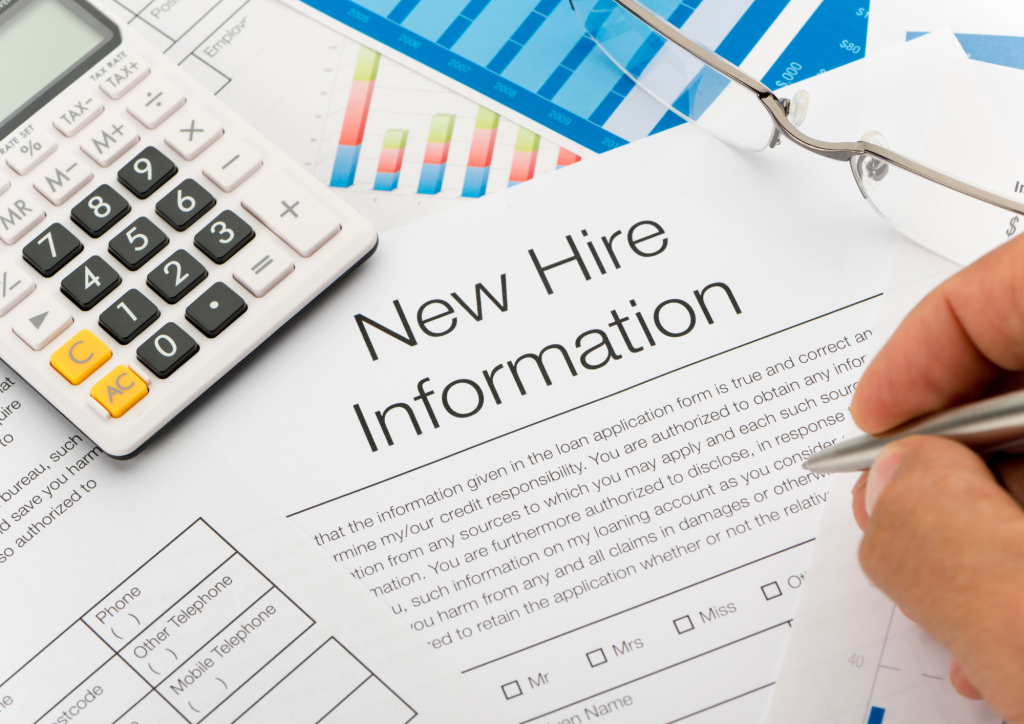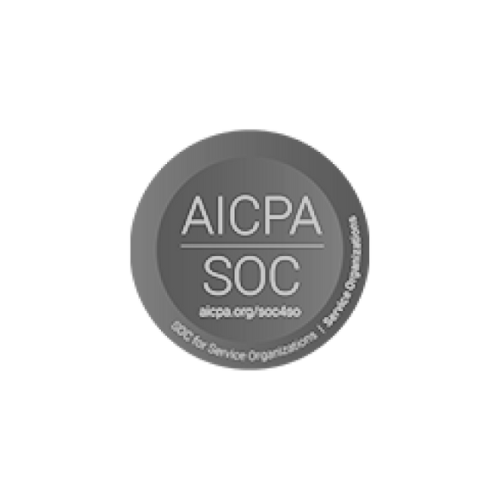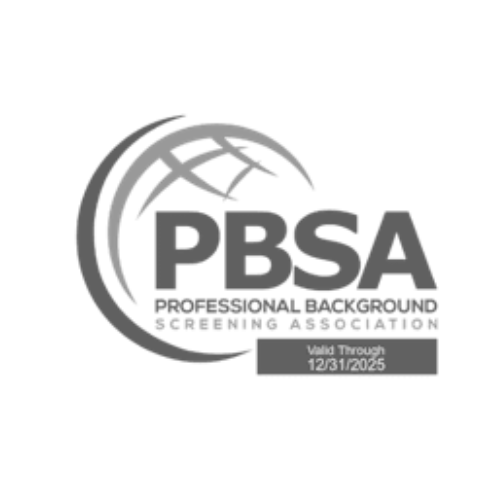The email arrived at 6:47 AM on a Monday morning with the subject line that made the CHRO’s coffee go cold: “Urgent: AI Audit Required by October 1st.” The message from their legal team outlined California’s new artificial intelligence employment regulations, which would take effect in just eight weeks. The company used AI-powered resume screening, automated interview scheduling, and algorithmic candidate ranking across all their California locations.
What had seemed like cutting-edge hiring technology was suddenly a compliance minefield. The new regulations required third-party audits of all AI systems used in employment decisions, documentation of bias testing, and detailed records of how algorithmic decisions were made. The company had sixty days to audit systems they barely understood, document processes they had never tracked, and prove fairness in algorithms they had never questioned.
This scenario is playing out in boardrooms across the country as California’s groundbreaking AI employment regulations prepare to reshape how organizations use artificial intelligence in hiring. While the rules officially apply only to California employers, their impact will be felt nationwide as companies with multi-state operations grapple with compliance requirements that are more complex and far-reaching than anything the industry has seen before.
The October 1st deadline isn’t just a California problem—it’s a wake-up call for every organization using AI in hiring decisions. The regulations represent the first comprehensive attempt to govern artificial intelligence in employment, and they’re setting standards that other states are already moving to adopt.
Understanding California’s AI Employment Revolution
California’s new AI employment regulations, officially approved by the Office of Administrative Law on June 27, 2025, represent the most comprehensive attempt to govern artificial intelligence in hiring and employment decisions. Unlike previous employment laws that focused on outcomes, these regulations dive deep into the processes and technologies that drive hiring decisions.
The regulations define “automated decision systems” broadly to include any technology that uses algorithms, machine learning, or artificial intelligence to make or substantially influence employment decisions. This definition captures not just obvious AI tools like resume screening software, but also applicant tracking systems with algorithmic ranking, video interview platforms with automated scoring, and even scheduling systems that use algorithms to determine interview priorities.
The scope of covered decisions extends beyond initial hiring to include promotions, performance evaluations, work assignments, and termination decisions. Any system that uses automated processes to evaluate, rank, or recommend employment actions falls under the new requirements, creating compliance obligations that touch virtually every aspect of modern HR technology.
The regulations establish three core requirements that will fundamentally change how organizations implement and manage AI hiring tools. First, employers must conduct regular bias audits of their AI systems, performed by qualified third parties who can demonstrate expertise in algorithmic fairness testing. Second, organizations must maintain detailed documentation of how their AI systems work, what data they use, and how decisions are made. Third, employers must provide transparency to job candidates about the use of AI in hiring decisions and give them opportunities to request human review of algorithmic decisions.
These requirements go far beyond simple disclosure obligations. They require organizations to understand their AI systems at a technical level, document their decision-making processes in detail, and prove that their systems don’t discriminate against protected groups. For many organizations, this represents a fundamental shift from using AI as a “black box” solution to treating it as a transparent, auditable business process.
The Audit Requirement That Changes Everything
The third-party audit requirement represents the most challenging aspect of California’s new regulations because it requires organizations to prove something they may never have measured: that their AI systems make fair and unbiased decisions. The regulations specify that audits must be conducted by qualified external parties who can demonstrate expertise in algorithmic bias testing and employment law compliance.
The audit process must examine both the design and the outcomes of AI systems. Auditors must review the data used to train algorithms, the decision-making logic embedded in the systems, and the actual hiring outcomes produced by the technology. This comprehensive approach means that organizations can’t simply rely on vendor assurances about fairness—they must independently verify that their systems work as intended and produce equitable results.
The technical complexity of these audits presents significant challenges for most organizations. Many companies using AI hiring tools don’t have detailed technical documentation of how their systems work, what data they use, or how decisions are calculated. Vendors often treat algorithmic details as proprietary information, making it difficult for employers to provide auditors with the technical specifications they need to conduct meaningful reviews.
The audit timeline adds another layer of complexity. Organizations must complete initial audits before October 1st and then conduct follow-up audits annually or whenever significant changes are made to their AI systems. This ongoing requirement means that AI audit compliance becomes a permanent part of HR operations rather than a one-time project.
The cost implications of regular third-party audits are substantial, particularly for smaller organizations or those using multiple AI systems. Qualified auditors with expertise in both algorithmic bias testing and employment law are rare and expensive. Organizations may need to budget tens of thousands of dollars annually for audit compliance, fundamentally changing the cost-benefit analysis of AI hiring tools.
Perhaps most significantly, the audit requirement creates legal liability that didn’t exist before. If an audit reveals bias or discrimination in an AI system, organizations must take corrective action or face regulatory penalties. If they fail to conduct required audits, they face additional penalties for non-compliance. This creates a compliance framework where ignorance is no longer a defense and where using AI creates ongoing legal obligations.
Documentation Requirements That Expose Hidden Processes
The documentation requirements in California’s AI employment regulations force organizations to understand and explain their AI systems in ways that many have never attempted. The regulations require detailed records of how AI systems make decisions, what data they use, how they’re trained and updated, and what safeguards exist to prevent discrimination.
For many organizations, this documentation requirement reveals how little they actually know about their AI hiring tools. Companies that implemented AI systems based on vendor promises of improved efficiency and reduced bias often discover that they can’t explain how their systems actually work or what factors influence hiring decisions. The documentation process becomes an education in their own technology.
The regulations specify that documentation must include technical specifications of AI algorithms, descriptions of training data and its sources, explanations of decision-making logic, records of system updates and modifications, and evidence of bias testing and mitigation efforts. This level of detail requires close collaboration between HR teams, IT departments, and AI vendors to compile information that may have never been centrally maintained.
The challenge is compounded by the fact that many AI systems are constantly learning and evolving. Machine learning algorithms update their decision-making based on new data, making it difficult to maintain current documentation of how systems work. Organizations must develop processes for tracking and documenting these changes to maintain compliance with ongoing documentation requirements.
The documentation must also be accessible to non-technical audiences, including job candidates who request information about how AI was used in their hiring process. This means that technical specifications must be translated into plain language explanations that candidates can understand, adding another layer of complexity to the documentation process.
The retention requirements for AI documentation are extensive, with records that must be maintained for several years after hiring decisions are made. This creates significant data management obligations and potential discovery risks in employment litigation. Organizations must develop systems for storing, organizing, and retrieving AI documentation that may be requested by regulators, auditors, or legal counsel.
The Transparency Revolution in Hiring
California’s transparency requirements represent a fundamental shift in the relationship between employers and job candidates by giving candidates unprecedented insight into how hiring decisions are made. The regulations require employers to disclose when AI is used in hiring decisions, explain how the AI systems work, and provide candidates with opportunities to request human review of algorithmic decisions.
The disclosure requirements go beyond simple notification that AI is being used. Employers must explain what types of AI systems are involved, what factors the systems consider, how decisions are made, and what safeguards exist to prevent discrimination. This level of detail requires organizations to understand their AI systems well enough to explain them clearly to candidates who may have no technical background.
The timing of disclosure creates operational challenges for many hiring processes. The regulations require disclosure before AI systems are used to evaluate candidates, which means that job postings, application processes, and initial communications must include AI disclosure information. This front-loaded transparency requirement forces organizations to be explicit about their use of AI from the very beginning of the hiring process.
The human review requirement gives candidates the right to request that a human reconsider any employment decision that was made or substantially influenced by AI. This creates new operational obligations for HR teams, who must be prepared to conduct manual reviews of algorithmic decisions and explain the basis for their conclusions. The human review process must be meaningful rather than perfunctory, requiring reviewers to actually reconsider the decision rather than simply confirming the AI recommendation.
The candidate communication requirements extend throughout the hiring process, with obligations to explain AI decisions at each stage where automated systems are used. If an AI system screens out a candidate’s resume, ranks them lower than other applicants, or influences interview scheduling, the candidate has the right to understand how these decisions were made and to request human review.
These transparency requirements create new touchpoints between employers and candidates that can significantly extend hiring timelines and increase administrative burden. However, they also create opportunities for organizations to differentiate themselves by demonstrating fairness and transparency in their hiring processes.
Multi-State Compliance Challenges
While California’s AI employment regulations officially apply only to California employers and California-based hiring decisions, their practical impact extends far beyond state borders. Organizations with multi-state operations face complex decisions about whether to implement California-compliant processes nationwide or maintain separate systems for different jurisdictions.
The technical challenges of maintaining separate AI systems for different states are substantial. Most AI hiring platforms are designed to operate consistently across all locations, making it difficult to implement different algorithmic approaches or documentation requirements for specific states. Organizations may find it more practical to implement California-compliant processes nationwide rather than trying to maintain separate systems.
The legal risks of inconsistent approaches across states create additional compliance challenges. If an organization uses more rigorous AI auditing and bias testing in California than in other states, they may face discrimination claims in other jurisdictions based on the argument that they knew how to implement fair AI systems but chose not to do so outside California.
The competitive implications of multi-state compliance decisions are significant. Organizations that implement California-compliant AI processes nationwide may gain competitive advantages in recruiting candidates who value transparency and fairness in hiring. Conversely, organizations that maintain minimal compliance approaches outside California may find themselves at a disadvantage in attracting top talent.
The cost implications of multi-state compliance vary significantly based on organizational size and complexity. Large organizations with sophisticated HR technology infrastructures may find it relatively easy to implement California-compliant processes nationwide. Smaller organizations may struggle with the cost and complexity of comprehensive AI auditing and documentation requirements.
The regulatory trend toward AI employment regulation suggests that California’s approach will likely be adopted by other states in the coming years. Organizations that proactively implement comprehensive AI compliance programs may find themselves better positioned for future regulatory requirements than those that take minimal compliance approaches.
Industry-Specific Implications
Different industries face unique challenges in complying with California’s AI employment regulations based on their specific hiring needs, regulatory environments, and risk profiles. Healthcare organizations, for example, must balance AI compliance requirements with existing medical licensing and patient safety regulations that may conflict with algorithmic hiring approaches.
Financial services companies face particular challenges because they’re already subject to extensive regulatory oversight of their hiring practices and must ensure that AI compliance doesn’t conflict with existing fair lending, anti-money laundering, or fiduciary responsibility requirements. The intersection of AI employment regulations with financial services regulations creates complex compliance environments that require careful legal analysis.
Technology companies, despite their technical expertise, often face unique challenges because they may be using cutting-edge AI systems that don’t have established audit methodologies or because their hiring needs for specialized technical roles may not align well with standardized AI fairness metrics.
Manufacturing and logistics companies may struggle with AI compliance requirements because their hiring processes often emphasize safety-related qualifications that may be difficult to evaluate through algorithmic fairness testing. The intersection of AI bias testing with legitimate safety requirements creates complex technical and legal challenges.
Professional services firms face challenges related to the subjective nature of many professional qualifications and the difficulty of applying algorithmic fairness testing to roles that require significant human judgment and client interaction skills.
The Technology Vendor Response
AI hiring technology vendors are scrambling to adapt their products and services to meet California’s new compliance requirements, but the responses vary significantly in their comprehensiveness and effectiveness. Some vendors are developing comprehensive audit and documentation capabilities, while others are taking minimal compliance approaches that may leave their customers exposed to regulatory risks.
The vendor audit support landscape is evolving rapidly, with some companies offering built-in audit capabilities while others are partnering with third-party auditing firms to provide comprehensive compliance services. Organizations evaluating AI hiring tools must carefully assess vendor compliance capabilities and understand what compliance support is included versus what they must arrange independently.
The documentation and transparency features being developed by vendors vary significantly in their usability and comprehensiveness. Some vendors are creating detailed technical documentation and candidate-facing explanations of their AI systems, while others are providing minimal compliance tools that require significant customization by their customers.
The cost implications of vendor compliance features are substantial, with many vendors implementing premium pricing for California-compliant versions of their AI tools. Organizations must factor these increased costs into their technology budgets and evaluate whether the benefits of AI hiring tools justify the additional compliance expenses.
The vendor liability and indemnification landscape is also evolving, with some vendors offering compliance guarantees and legal protection while others are shifting compliance responsibility entirely to their customers. Organizations must carefully review vendor contracts to understand their compliance obligations and legal exposure.
Building Effective Compliance Programs
Organizations that want to build effective AI employment compliance programs must start with comprehensive inventories of their current AI usage in hiring and employment decisions. Many organizations discover that they’re using more AI than they realized, with algorithmic components embedded in applicant tracking systems, interview platforms, and performance management tools.
The compliance program development process requires close collaboration between HR, legal, IT, and vendor management teams to ensure that all aspects of AI usage are properly documented and audited. This cross-functional approach is essential because AI compliance touches on technical, legal, and operational considerations that no single department can address independently.
The audit vendor selection process requires careful evaluation of auditor qualifications, experience, and methodologies to ensure that audits meet regulatory requirements and provide meaningful insights into AI system fairness. Organizations should look for auditors with specific experience in employment law, algorithmic bias testing, and the particular AI technologies they’re using.
The ongoing compliance monitoring requirements mean that AI compliance becomes a permanent part of HR operations rather than a one-time project. Organizations must develop systems for tracking AI system changes, maintaining current documentation, and scheduling regular audits to ensure ongoing compliance.
The employee training and change management aspects of AI compliance are often overlooked but critical for success. HR staff, hiring managers, and IT personnel must understand their roles in maintaining AI compliance and be prepared to handle candidate questions and requests for human review.
The Broader Implications for Hiring
California’s AI employment regulations represent more than just new compliance requirements—they signal a fundamental shift in how society thinks about the role of artificial intelligence in employment decisions. The regulations reflect growing recognition that AI systems can perpetuate and amplify existing biases while creating new forms of discrimination that traditional employment laws weren’t designed to address.
The transparency requirements in the regulations may fundamentally change candidate expectations about hiring processes. As candidates become accustomed to understanding how AI influences hiring decisions, they may begin to expect similar transparency from all employers, creating competitive pressure for organizations to adopt transparent hiring practices even where not legally required.
The audit and documentation requirements may drive improvements in AI system design and implementation as vendors and employers focus more attention on fairness and bias mitigation. The regulatory pressure for algorithmic accountability may accelerate the development of more sophisticated bias testing and mitigation technologies.
The cost and complexity of AI compliance may cause some organizations to reconsider their use of AI in hiring, potentially slowing the adoption of automated hiring tools or driving demand for simpler, more transparent AI systems that are easier to audit and explain.
The regulatory precedent set by California’s AI employment regulations will likely influence similar legislation in other states and potentially at the federal level. Organizations that develop comprehensive AI compliance capabilities now may find themselves better positioned for future regulatory requirements.
Preparing for the October Deadline
Organizations that haven’t started preparing for California’s October 1st AI employment regulations deadline face significant challenges in meeting the compliance requirements in the remaining time. The audit requirement alone typically takes several weeks to complete, and organizations must first compile the documentation and technical specifications that auditors need to conduct meaningful reviews.
The immediate priority for most organizations should be conducting comprehensive inventories of their AI usage in hiring and employment decisions. This inventory process often reveals AI components that weren’t previously recognized as such, including algorithmic features in applicant tracking systems, automated scoring in video interview platforms, and ranking algorithms in job board integrations.
The vendor engagement process requires immediate attention because many AI hiring technology vendors are still developing their compliance capabilities and may not be able to provide the documentation and audit support that organizations need. Early engagement with vendors can help ensure that necessary compliance support is available before the October deadline.
The audit vendor selection and scheduling process should begin immediately because qualified auditors are in high demand and may not be available for last-minute engagements. Organizations should begin evaluating audit vendors and scheduling preliminary discussions to ensure that audits can be completed before the compliance deadline.
The documentation compilation process is often more time-consuming than organizations expect because it requires gathering technical information from multiple sources and translating it into formats that meet regulatory requirements. Starting this process early can help identify gaps in available information and provide time to work with vendors to obtain missing documentation.
The Long-Term Strategic Implications
California’s AI employment regulations represent the beginning of a new era in employment law rather than an isolated compliance requirement. The regulatory framework established by these rules will likely be adopted and expanded by other states, creating a national trend toward algorithmic accountability in hiring.
Organizations that view AI compliance as a strategic opportunity rather than just a regulatory burden may find themselves better positioned for future success. Comprehensive AI auditing and documentation can provide insights into hiring effectiveness, bias mitigation, and process improvement that create competitive advantages beyond mere compliance.
The transparency requirements may actually improve candidate experience and employer branding for organizations that embrace them fully. Candidates increasingly value fairness and transparency in hiring processes, and organizations that can demonstrate algorithmic accountability may attract higher-quality applicants.
The audit and documentation requirements may drive innovation in AI hiring technology as vendors develop more sophisticated bias testing, explanation capabilities, and audit support features. Organizations that partner with innovative vendors may gain access to more effective and compliant AI hiring tools.
The regulatory trend toward AI accountability extends beyond employment to areas such as lending, housing, and healthcare. Organizations that develop comprehensive AI governance capabilities for employment may find these capabilities valuable for other AI applications as well.
Building Competitive Advantage Through Compliance
Forward-thinking organizations are recognizing that California’s AI employment regulations create opportunities to build competitive advantages through superior compliance and transparency. Rather than viewing the regulations as burdensome requirements, these organizations are using compliance as a differentiator in talent acquisition and employer branding.
The audit and documentation requirements provide opportunities to gain deeper insights into hiring effectiveness and bias mitigation than most organizations have ever had. Comprehensive AI auditing can reveal patterns in hiring decisions, identify opportunities for process improvement, and demonstrate commitment to fairness that resonates with candidates and employees.
The transparency requirements create opportunities to build trust with candidates by demonstrating openness about hiring processes and commitment to fair treatment. Organizations that embrace transparency may find that candidates prefer their hiring processes over those of competitors who provide minimal disclosure about AI usage.
The vendor partnership opportunities created by AI compliance requirements may provide access to more sophisticated and effective hiring technologies. Vendors that invest heavily in compliance capabilities may also be investing in more advanced AI features that provide better hiring outcomes.
The regulatory expertise developed through AI compliance may position organizations as thought leaders in the evolving landscape of AI governance and employment law. This expertise can be valuable for business development, partnership opportunities, and industry leadership.
The question facing every organization using AI in hiring isn’t whether to comply with California’s new regulations—it’s whether to view compliance as a minimum requirement or as an opportunity to build competitive advantages through superior AI governance and transparency.
The October 1st deadline is approaching quickly, but the implications of California’s AI employment regulations will be felt for years to come. Organizations that invest in comprehensive compliance programs now will be better positioned for the future of AI-powered hiring, while those that take minimal compliance approaches may find themselves struggling to keep up with evolving regulatory requirements and candidate expectations.
The AI hiring audit isn’t just about meeting California’s requirements—it’s about preparing for a future where algorithmic accountability is the norm rather than the exception. The time to start building that future is now.
About the Author: Sachin Aggarwal is a thought leader in background verification and HR compliance. He helps organizations navigate the complex intersection of artificial intelligence, employment law, and regulatory compliance.
Ready to prepare for AI compliance requirements? Contact AMS Inform for guidance on developing comprehensive AI audit and compliance programs that meet regulatory requirements while building competitive advantages in talent acquisition.
















